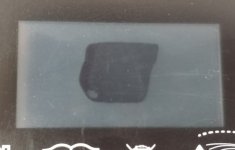JackFlorey
100 kW
"If there is one?" It is often longer than the CC stage, especially with higher power chargers. (Which is one reason why going higher in power doesn't always get you significantly shorter charge times.)john61ct said:The CV period - if there is one - will be a small fraction of the CC stage.


![20201218_180814[1].jpg 20201218_180814[1].jpg](https://endless-sphere.com/sphere/data/attachments/156/156337-eb1f12b7105cf7e2b8210173ec7a05af.jpg)
![20201218_180808[1].jpg 20201218_180808[1].jpg](https://endless-sphere.com/sphere/data/attachments/156/156338-ce4c06e1cb98cd4d9391cd56c839fa6d.jpg)
